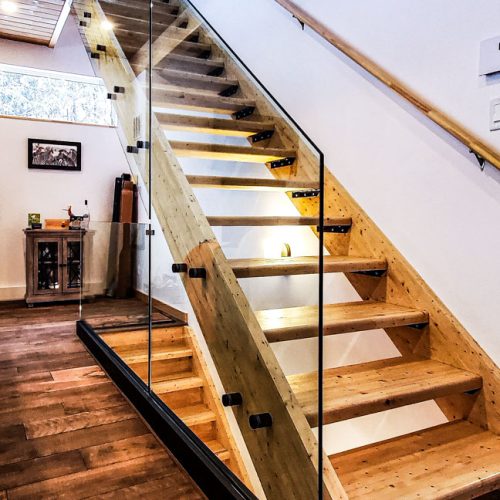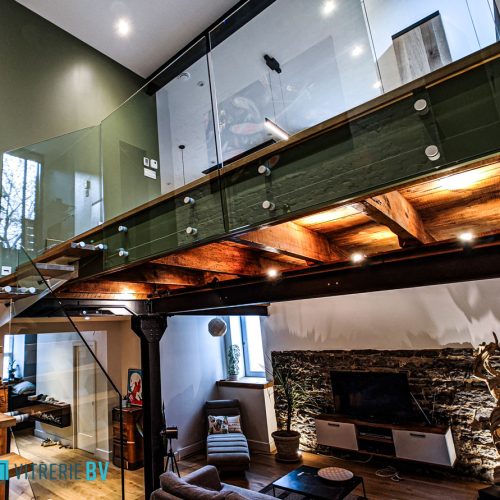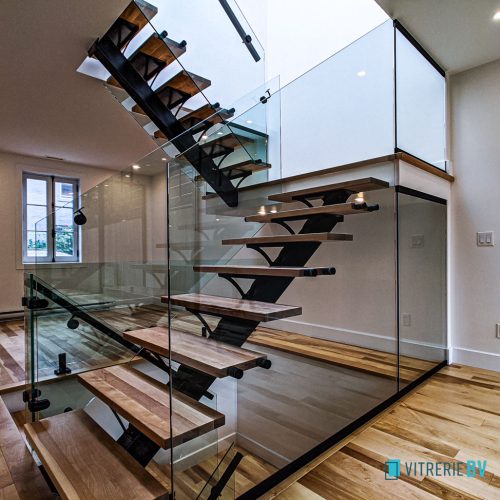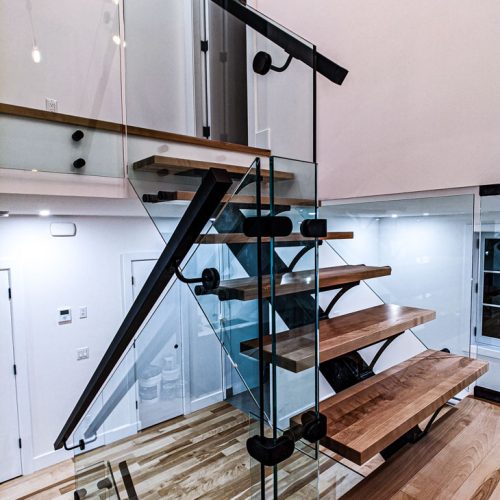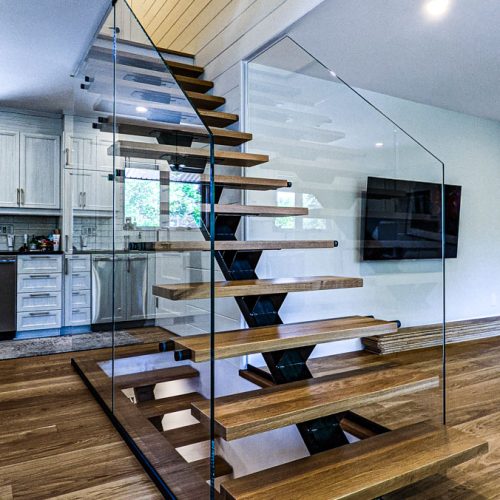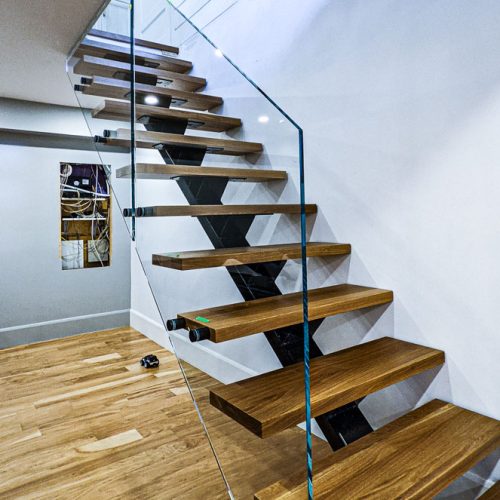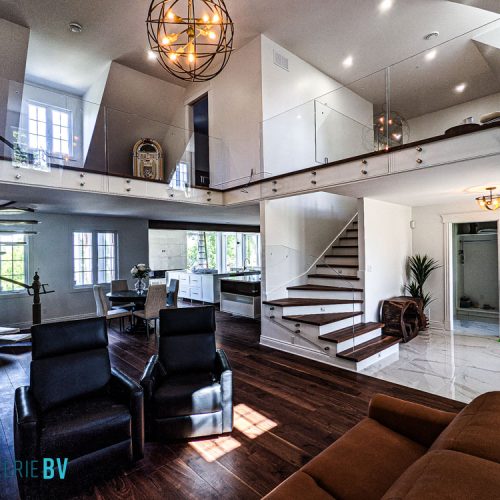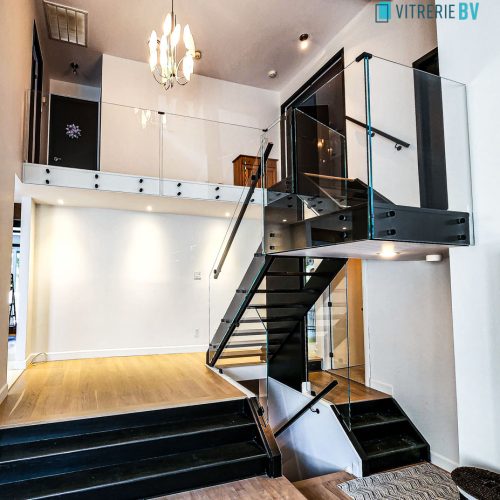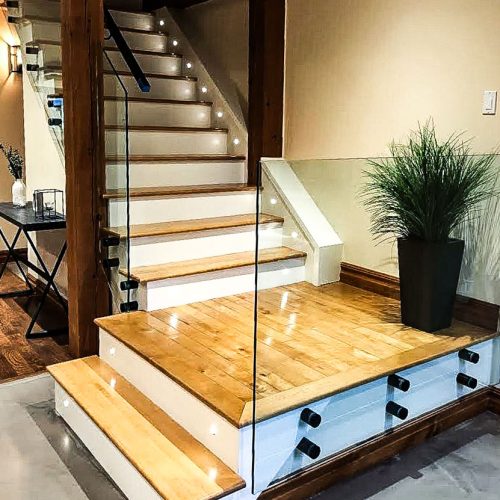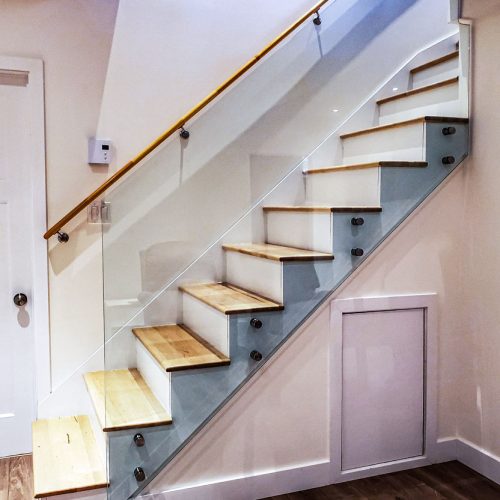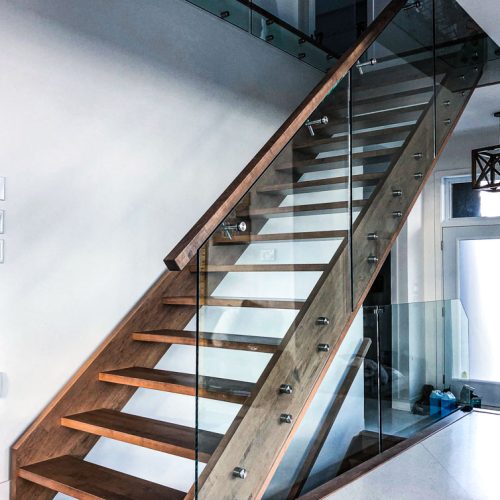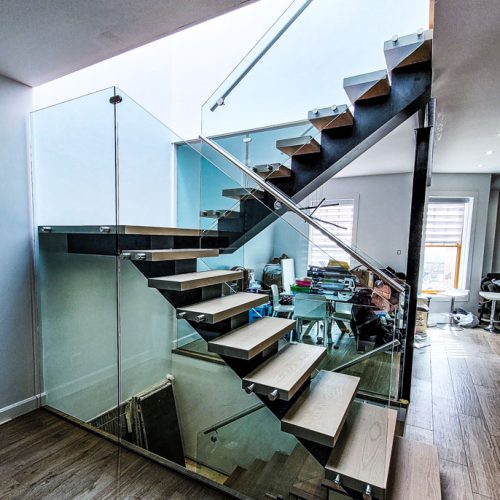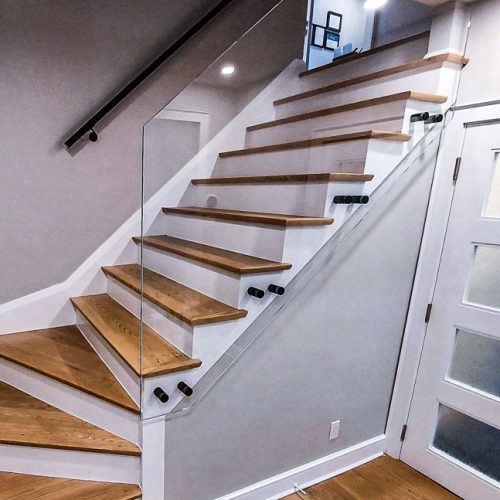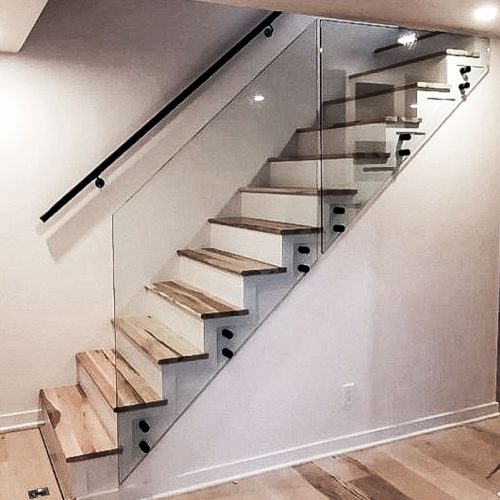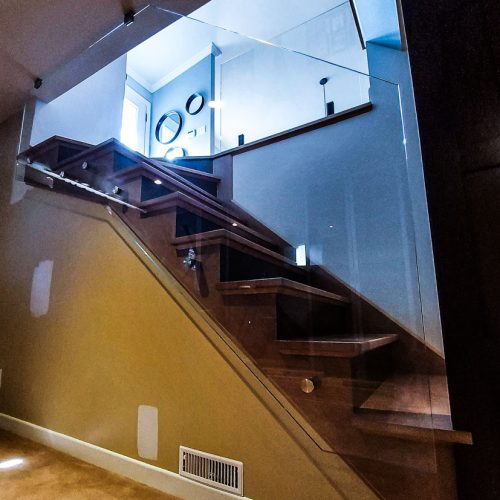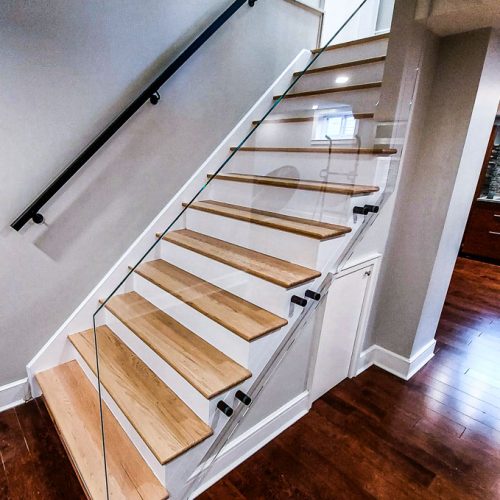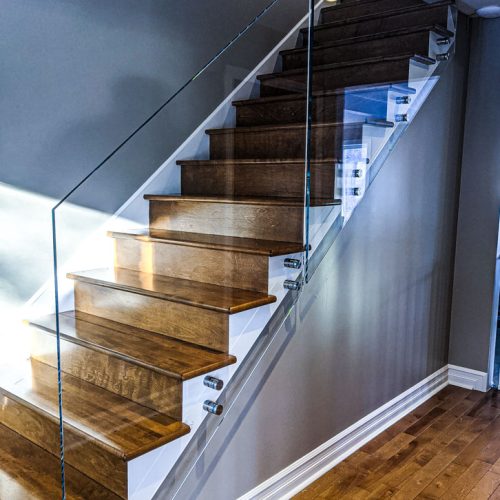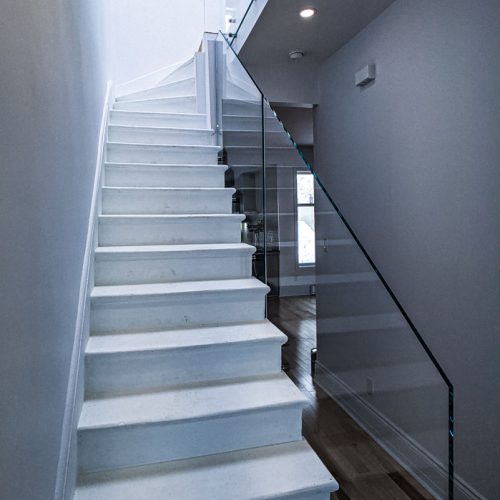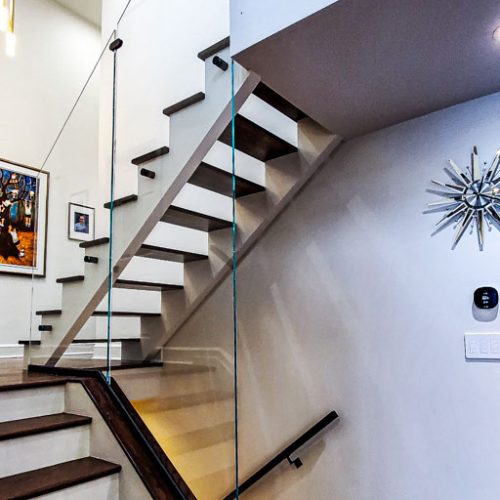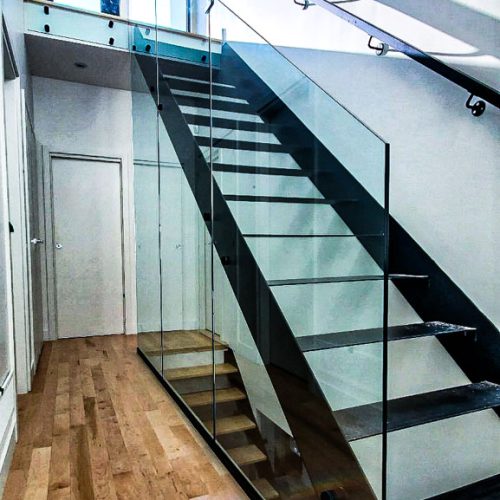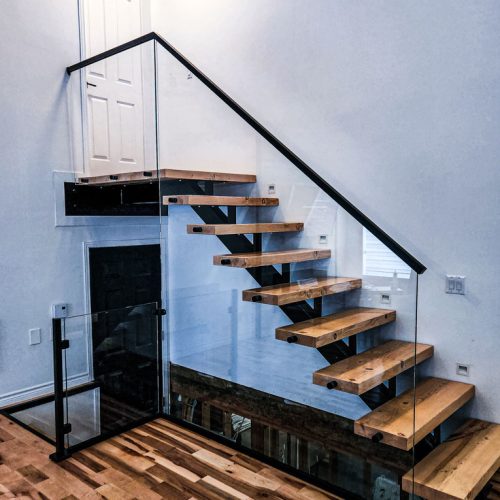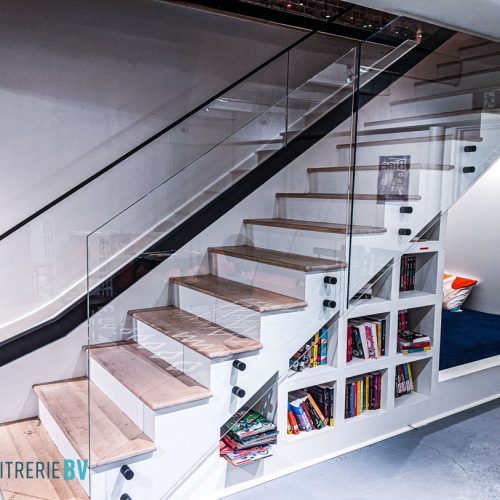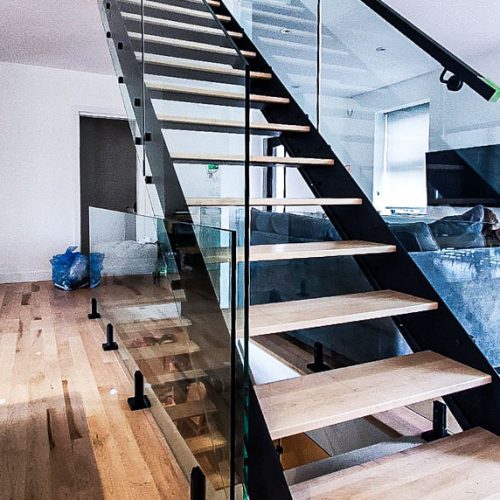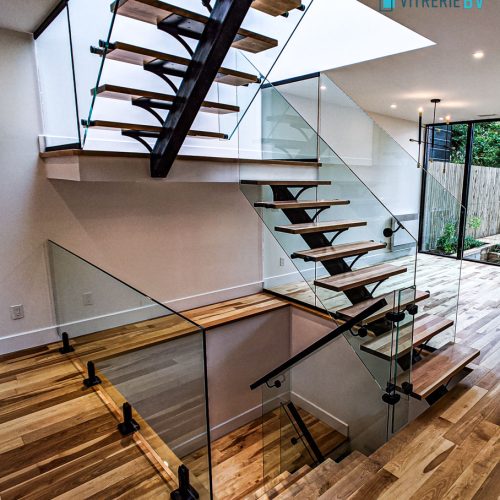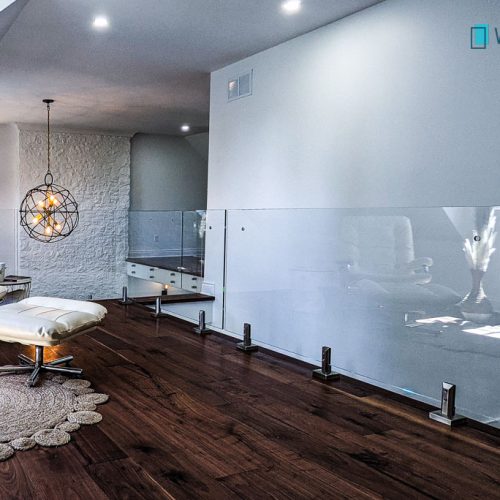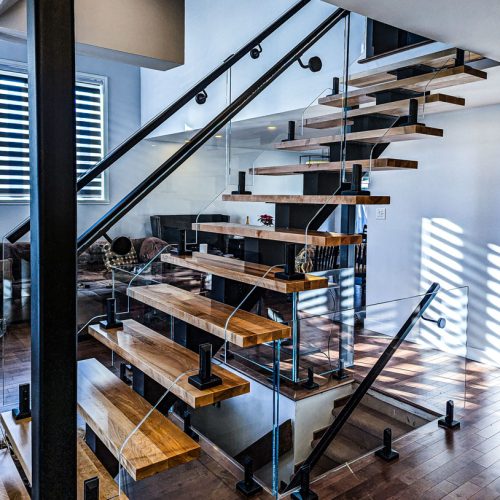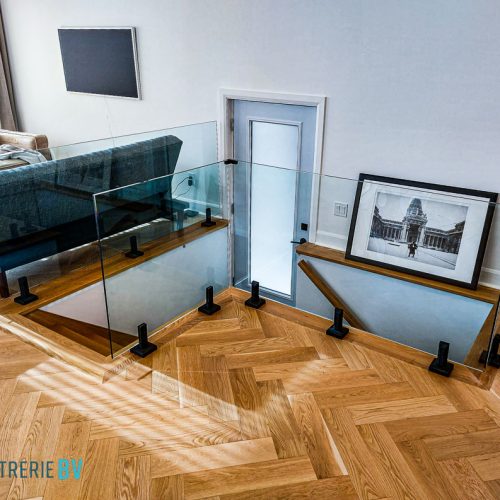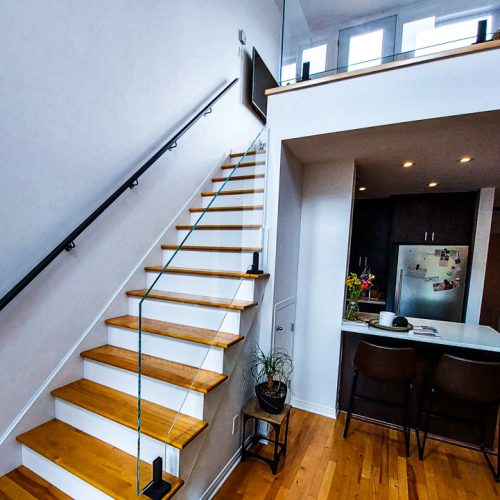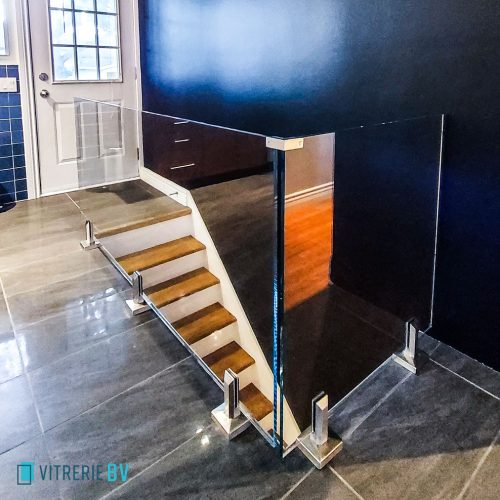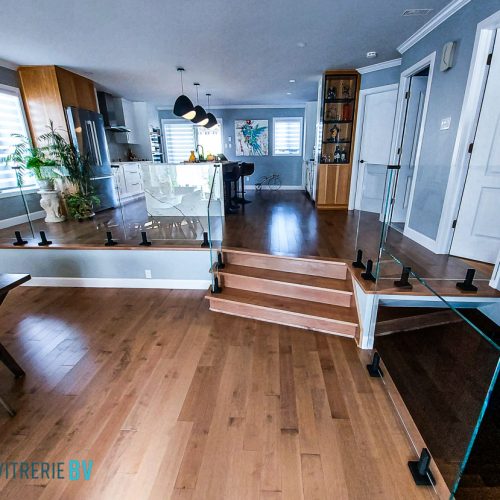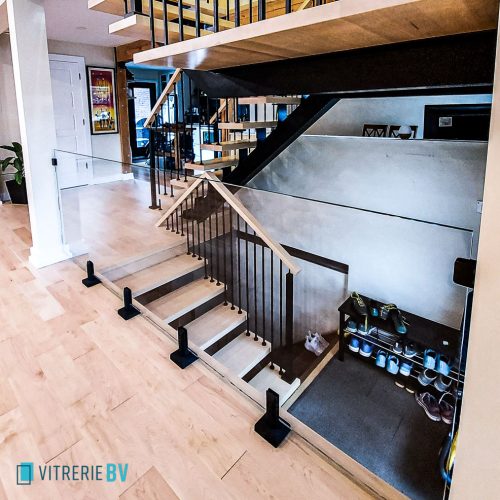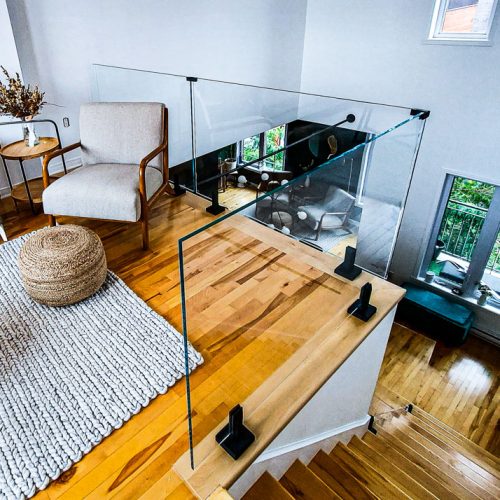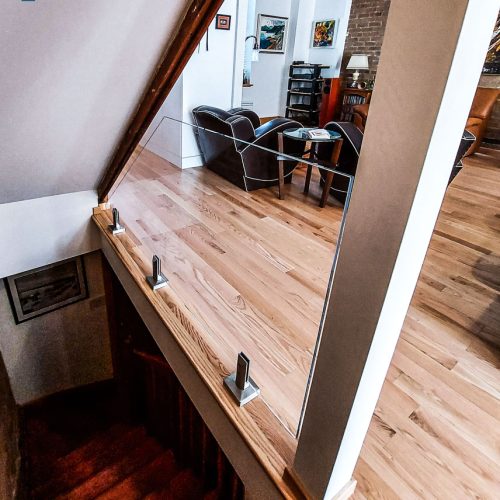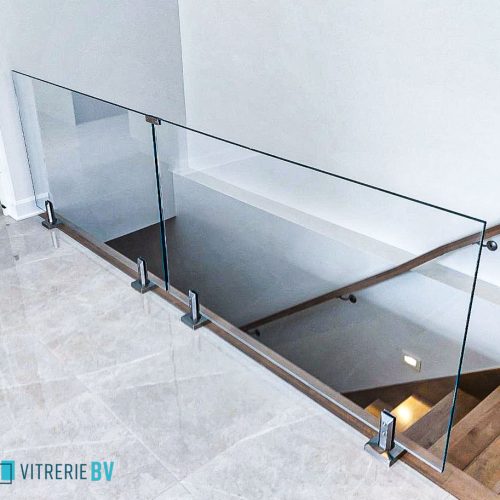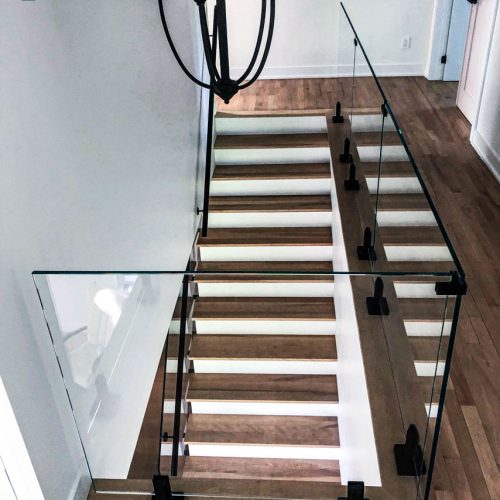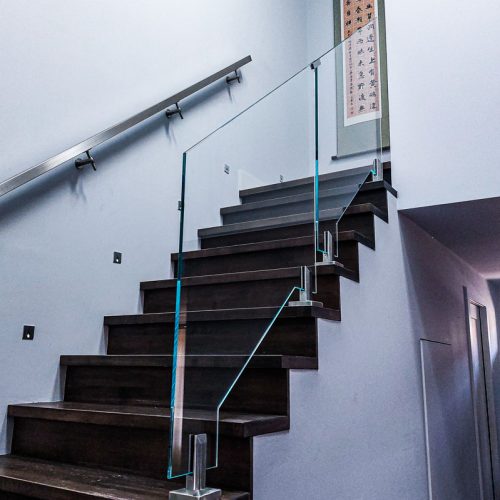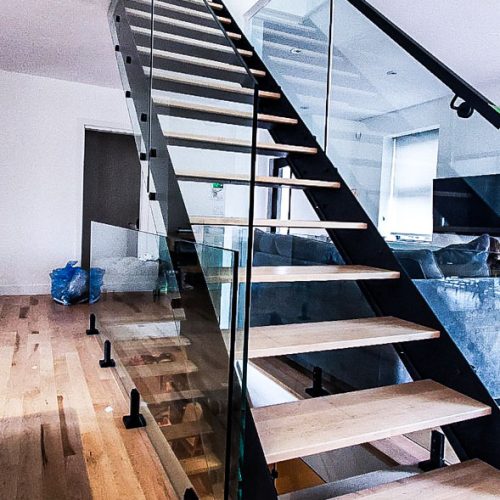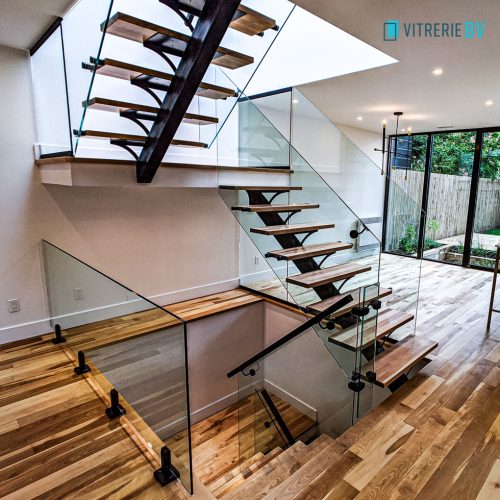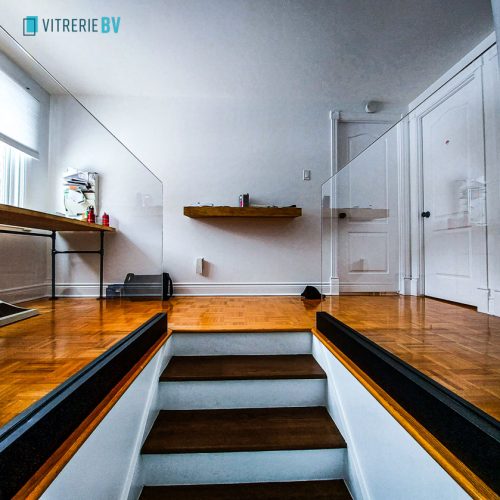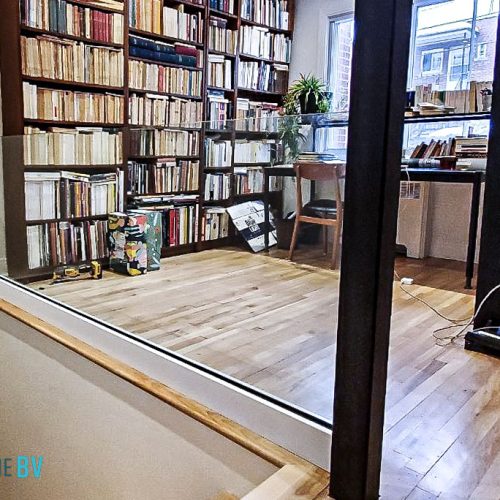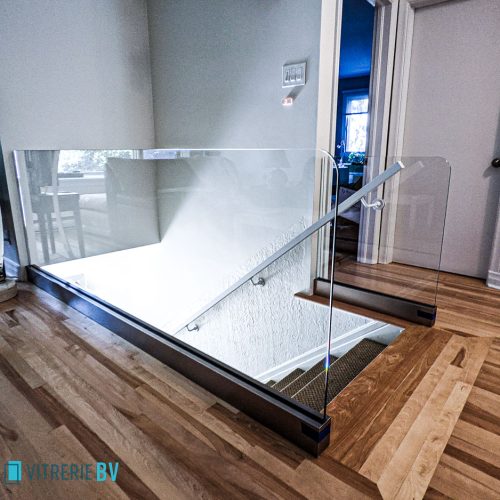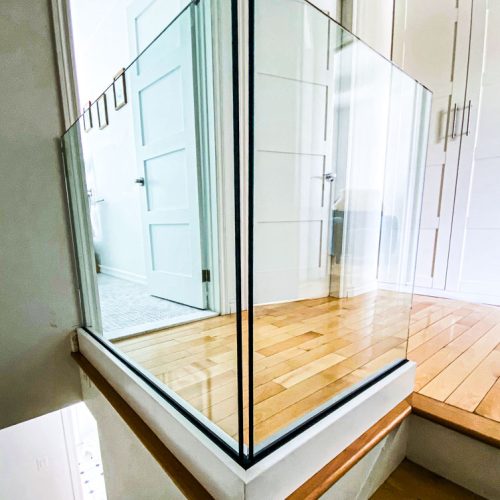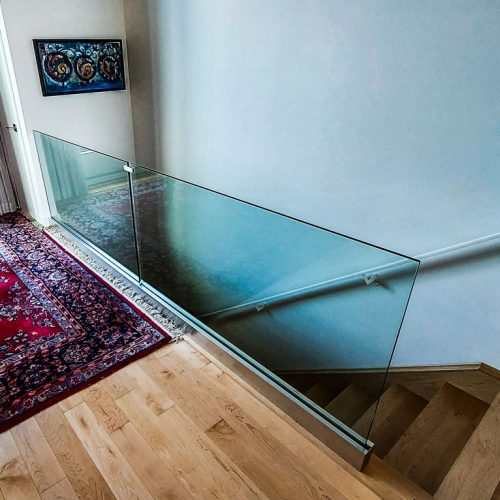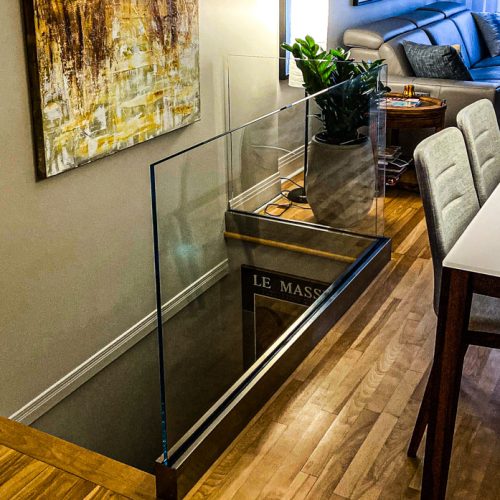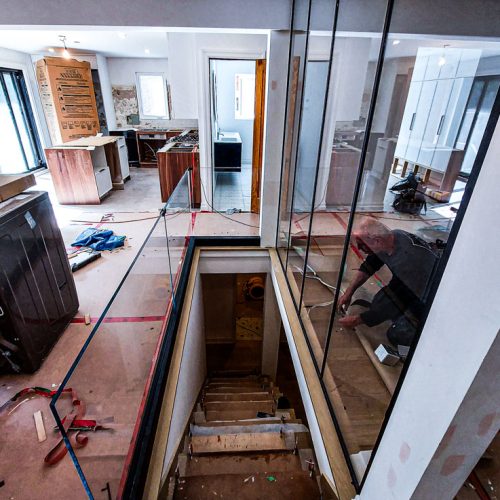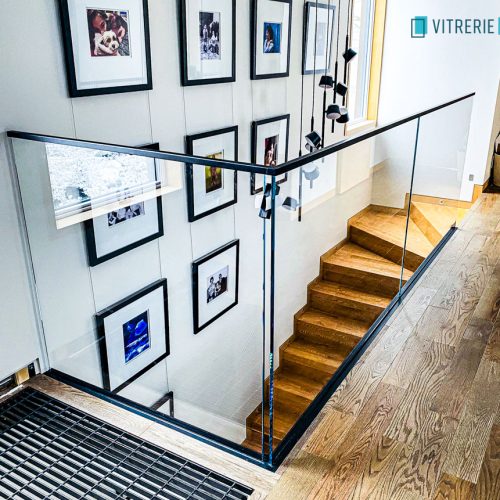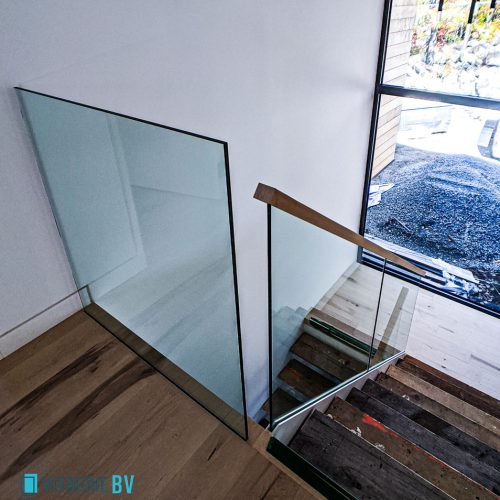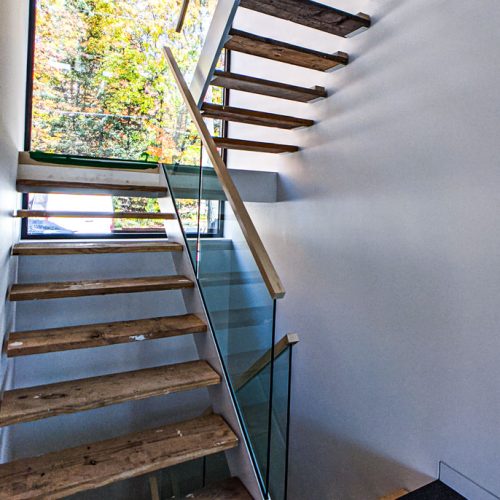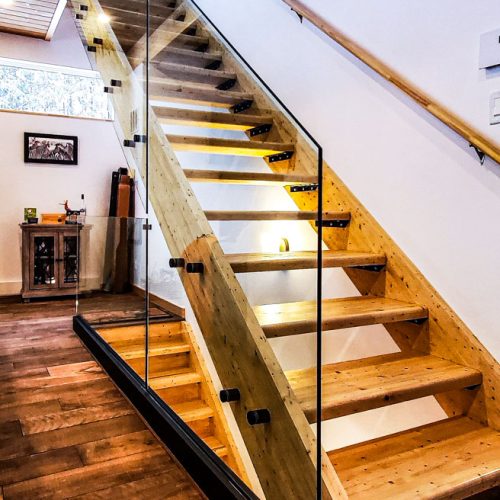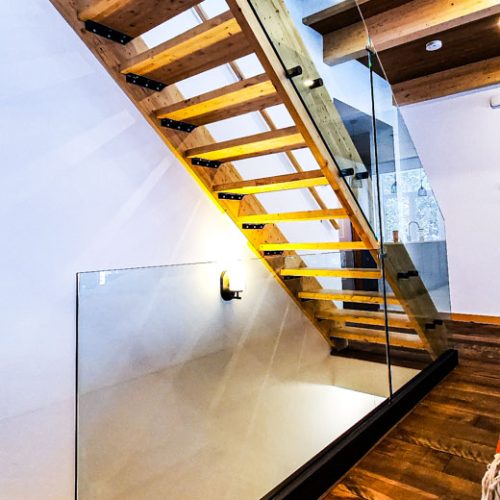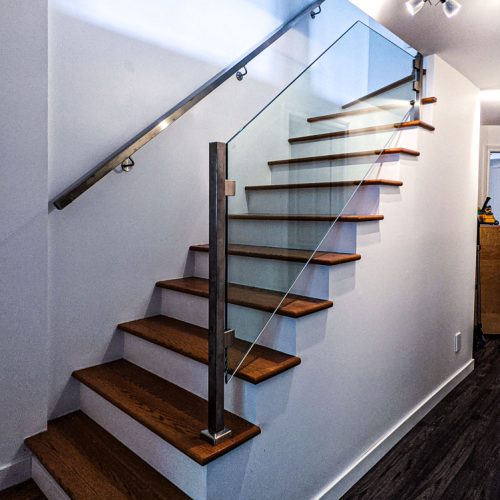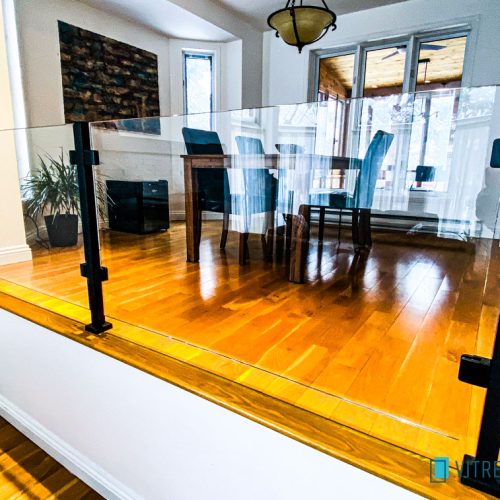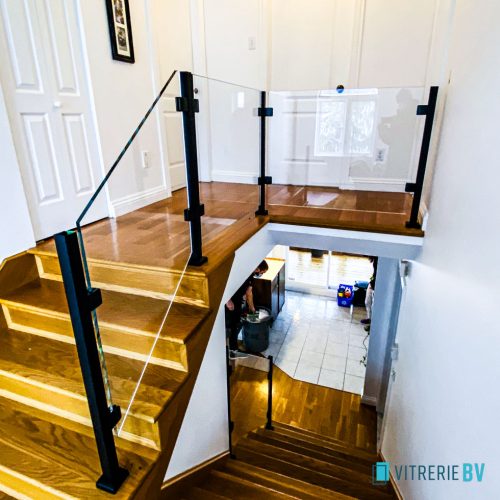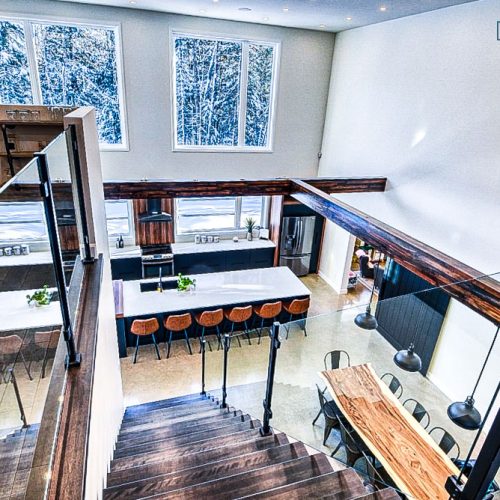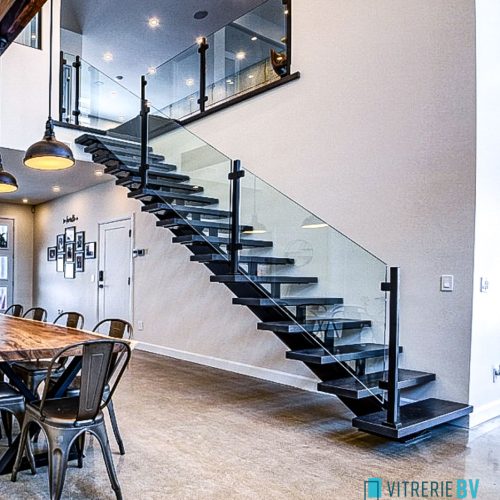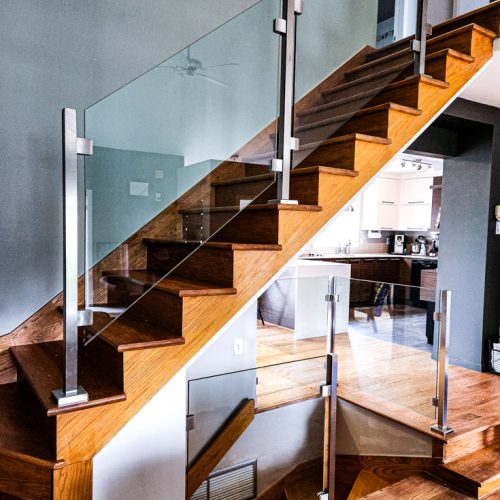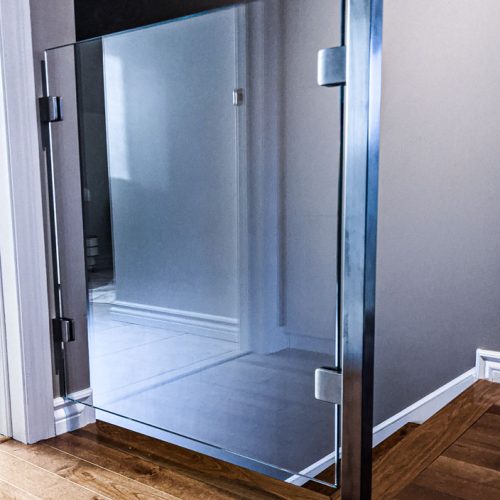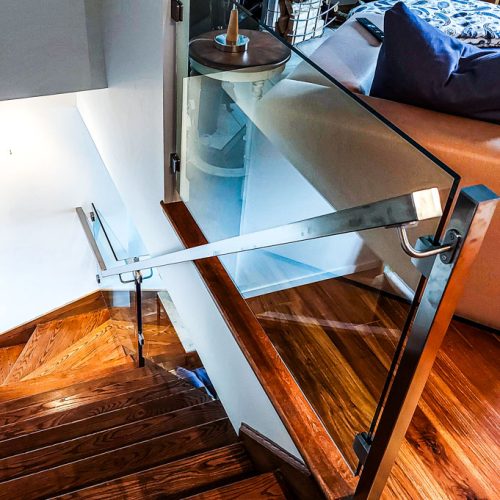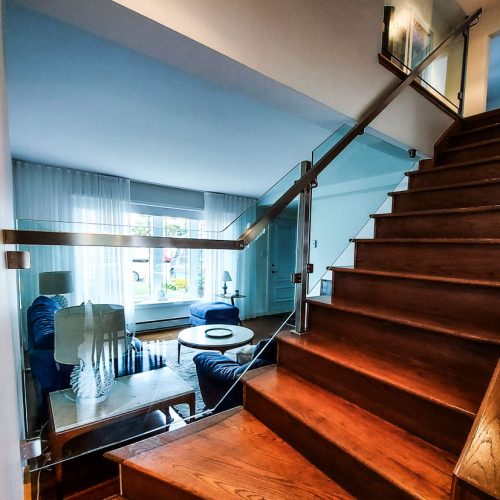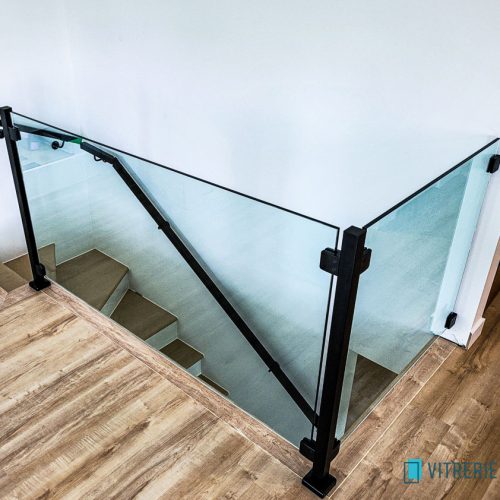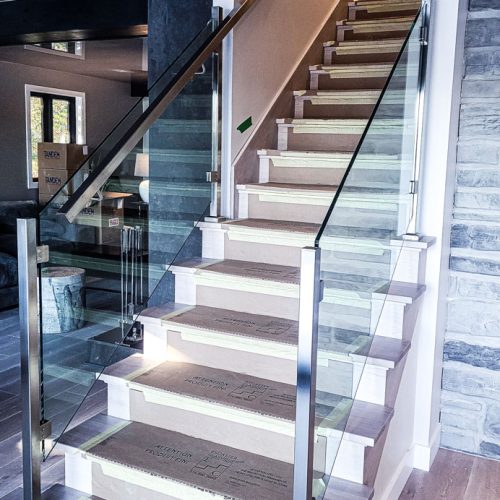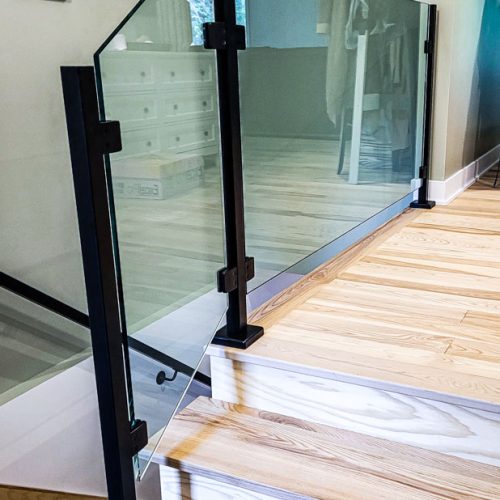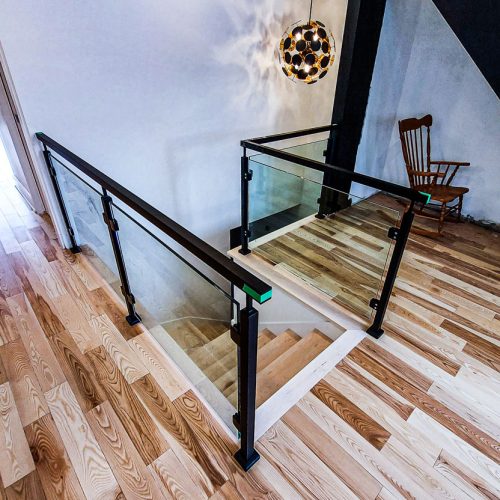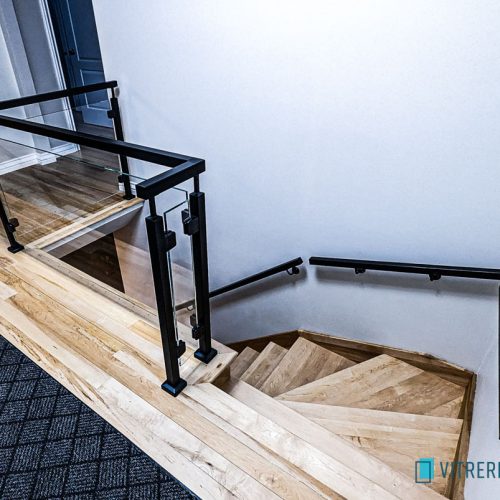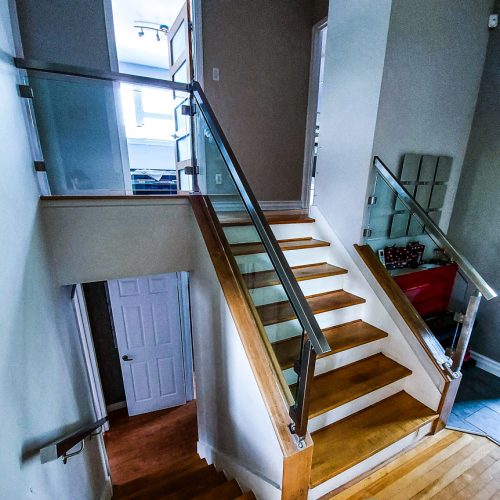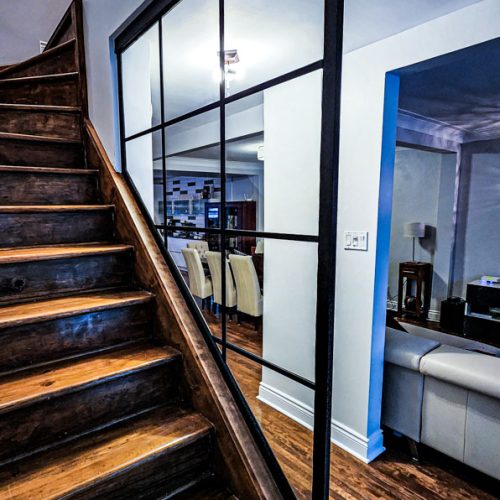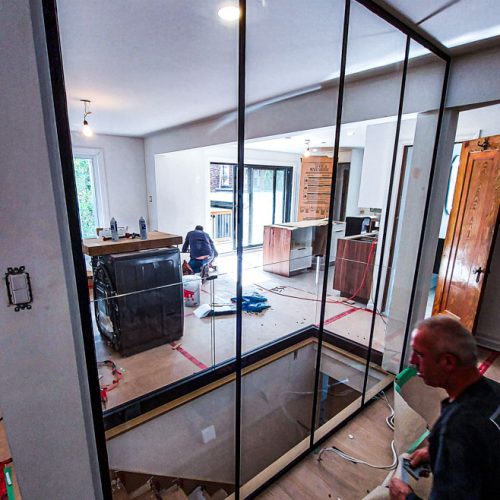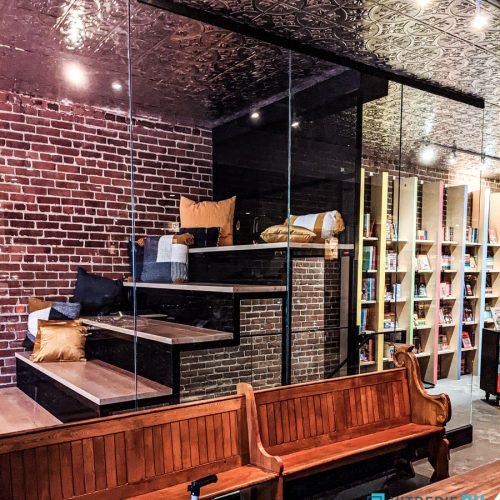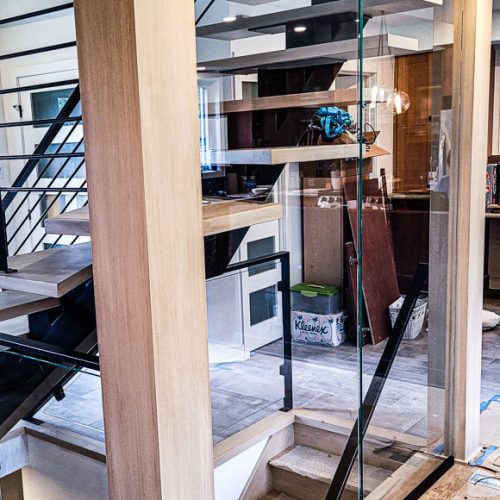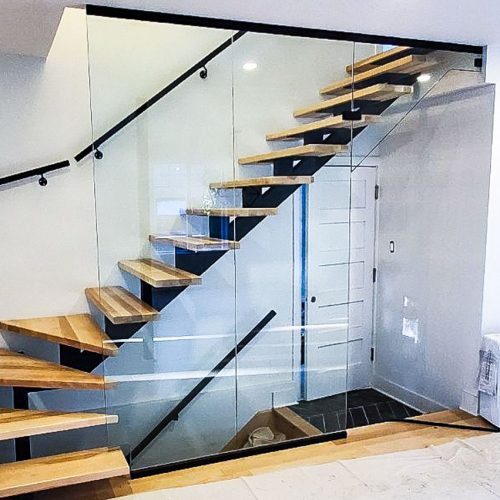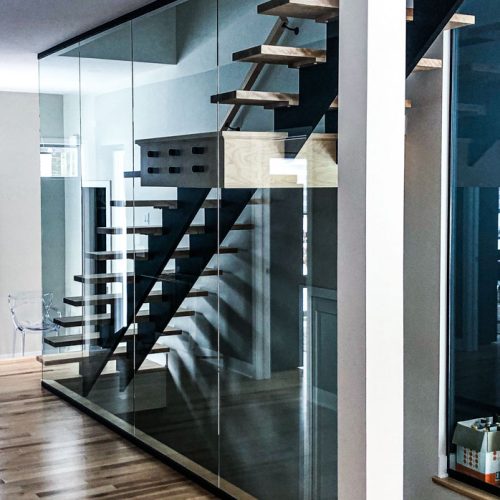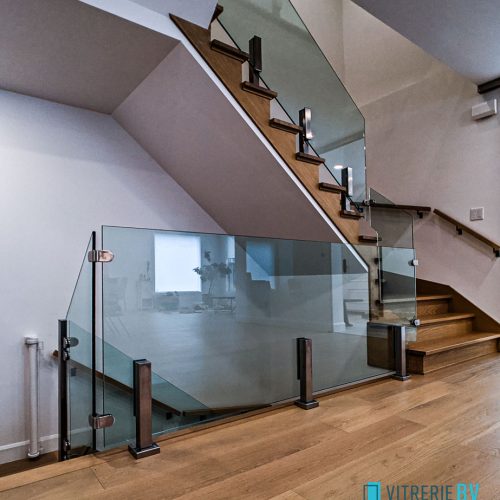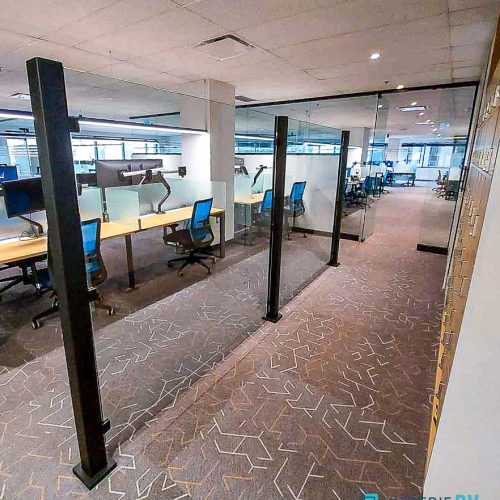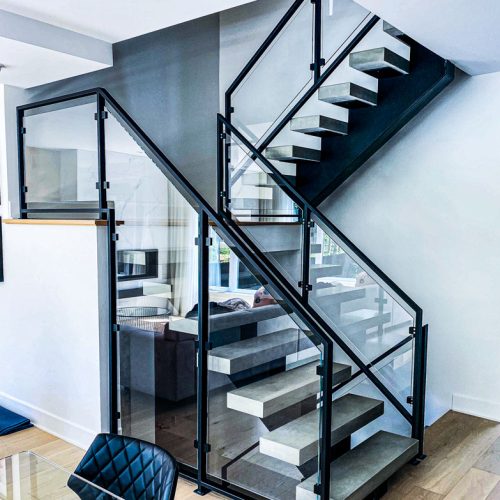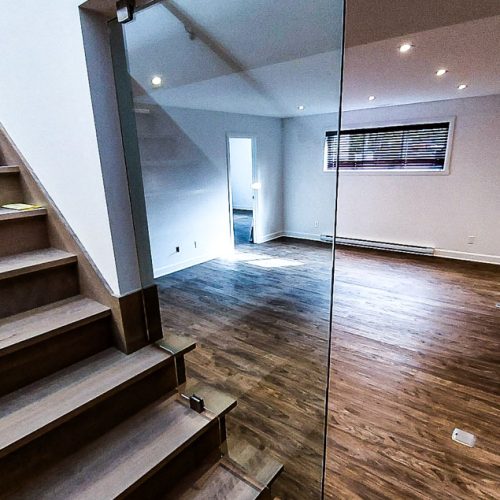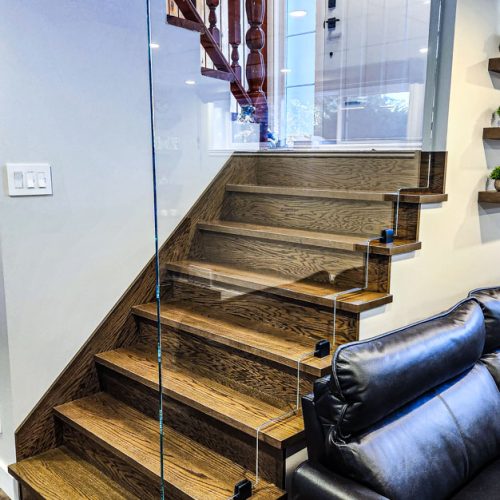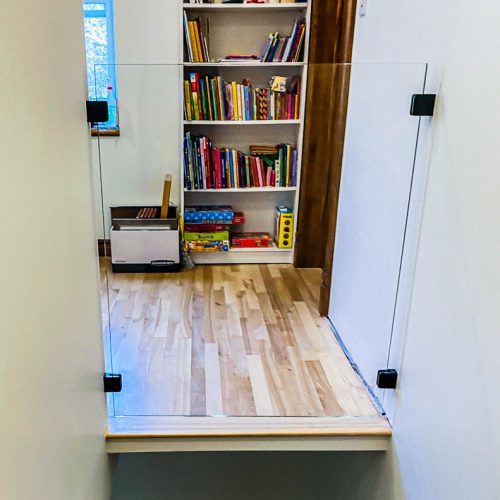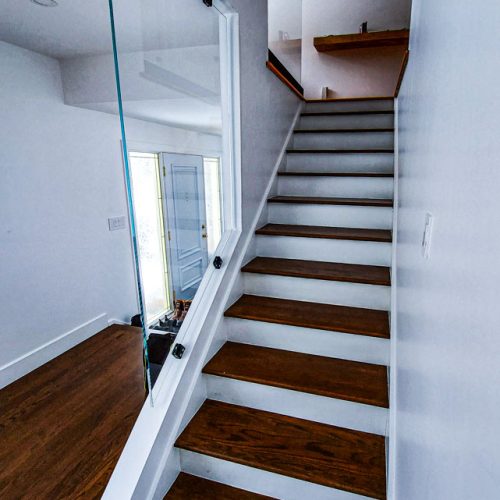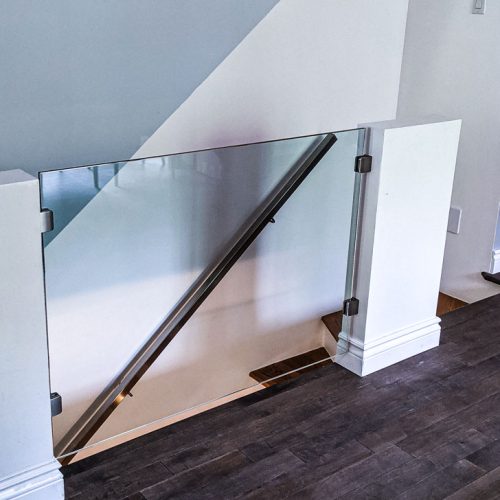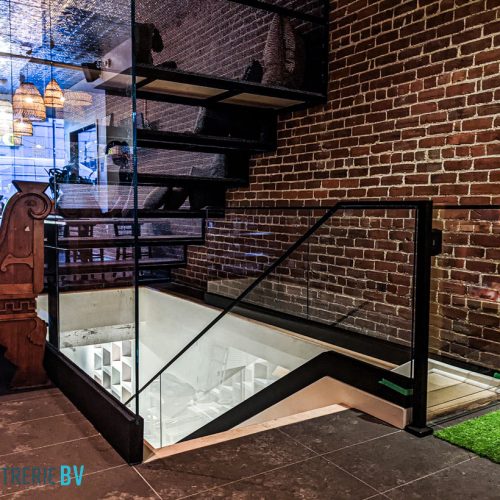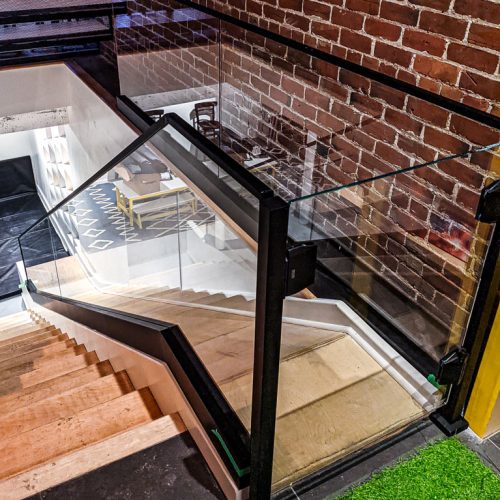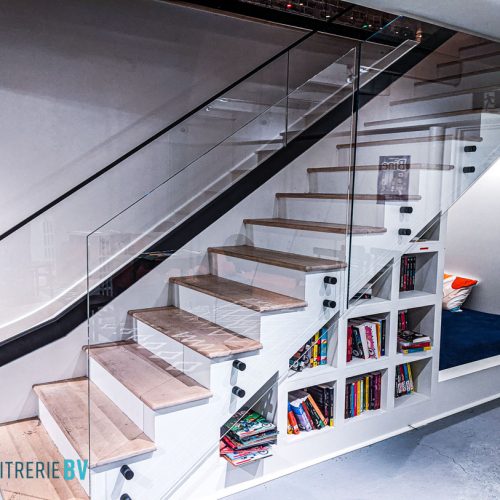Glass Railings: Why Are They So Popular?
Much more than just a matter of compliance with the Quebec building code, the staircase is often a central feature of interior architecture, which can be transformed into a true masterpiece thanks to a glass railing.
Glass railings, or glass guardrails, transform a classic staircase into a bright, modern work of art. In addition to their aesthetic appeal, they are easy to maintain and offer longevity far superior to that of wood or other materials. Glass is also at the forefront of current trends.
The Benefits of Glass Railings
Their growing popularity is due to the many advantages they offer. In addition to complying with safety standards, here are some of the main benefits of glass railings:
- elegant design
- increased luminosity
- easy maintenance
- exceptional durability
- luxurious appearance
- increase in property value thanks to their high-end, timeless appearance
Types of Glass Railing Installation
In the world of interior design and custom glass projects, glass railings and guardrails can be distinguished by the way they are installed, especially the type of hardware used to secure the glass. Here are some of the most common types used in the decoration and design field and by our customers:Standoff Glass Railing
The first type of installation is the standoff glass rail. Some of our customers call them “puck rails.” This system uses anchors installed perpendicular to the steps or string. This type of glass railing works best on stairs with centre stringers. It preserves the full width of the treads, as the railing is fixed to the outside of the staircase.
However, this type of installation is not recommended for narrow stairwells, as the glass can encroach on the available space, especially when ascending or descending adjacent stairs.
This installation enhances the space and creates a sense of grandeur.
Spigot Glass Railing
Spigot glass railings are a more economical option for glass guardrails. This type of railing resembles a glass clamp system anchored to the floor. It is installed directly at the “nose of the floor” or “nose of the stairs.”
As they say, a picture is worth a thousand words. Here are a few examples:
Base Shoe Glass Railing
Base shoe guardrails are the most durable over time. They resemble a complete moulding at ground level, making them easy to clean. The installation of base shoe guardrails is better suited for floors than for stairs, as a staircase must be specially designed to accommodate this type of system.
It is possible to embed a base shoe in the floor to minimize the visual impact of the hardware. However, this option must be planned in advance to ensure a perfect installation.
Post Glass Railing
This type of railing is similar to conventional models, but uses glass instead of metal wires, wooden beams, or horizontal or vertical lines as in steel railings. The glass panels are held in place by glass clamps attached to the posts, providing great strength.
This is an excellent compromise between a glass railing and a conventional railing. Post railings can be installed with or without a handrail, depending on the desired design.
Full-Height Glass Railing
These ramps are similar to glass partitions used to divide office spaces. Full-height ramps are anchored to the floor and ceiling, with the advantage of having no visible hardware to obstruct the view. This is an excellent option for limiting noise transmission between different floors.
If your project is more akin to a glass partition than a glass railing, we invite you to read our blog: Glass Partitions Walls: Everything You Need to Know About Glass Partitions Walls – Insights, Examples and Photos.
Glass Railing – Other
Because there’s always an “Other” category, our experts are ready to offer you the best options to suit your space, whether in the initial design stage or for your renovation projects. All tastes are catered for, and we can even engrave a lizard at the bottom of a glass panel if you wish! Yes, we receive all kinds of requests, even the most unusual, and we fulfill them with enthusiasm. Put us to the test!
Glass Railing and Safety!
Handrail: Construction Code Compliance
To comply with the construction code, all staircases must be equipped with a handrail. The code requires handrails to be installed 36″ above the floor.
Unfortunately, and this is important to know, leaning on the glass to go up or down a staircase does not comply with current laws and regulations.
Your handrail can be installed in a variety of ways: wall-mounted, fixed to the glass, or integrated directly into the glass. Different finishes and sizes are available to meet your aesthetic and practical needs. Your expert glazier can advise you free of charge on your specific situation.
Regulation of Glass Railing.
We’ve just discussed the importance of the handrail, but what are the other regulations? We provide you here with as much information as possible to help you in your research, but don’t forget to check the regulations specific to your situation.
- Railings and guardrails must be 36″ or 42″ high to comply with the Construction code.
- A height of 42″ is required for guardrails installed indoors, but only if the protected floor is 12′ or more from the ground outside the guardrail.
- For stairs, the Construction code requires handrails to be 36″ high. However, we can design them to a height of 42″ for aesthetic reasons to ensure uniformity with all guardrails.
Do you have a pool project? For glass railings and outdoor guardrails, we invite you to read our guide: Swimming Pool Regulations Made Easy – Demystifying the New Pool Fence Regulations. Everything You Need to Know. Read More Here.
Glass Railing and Design
Glass Railing Hardware Type
At this point, you’ve probably already decided on the type of glass railing you want to install. But what’s the next step? Choosing the right hardware! It’s a bit like looking for the bean in the Three Kings cake: sometimes you find the answer right away, other times it takes a little longer. The possibilities are endless! Your designer, your glazing expert, or even your Pinterest board can help you make the right choices.
To get you started, here’s a sample installation with the names of the hardware used.
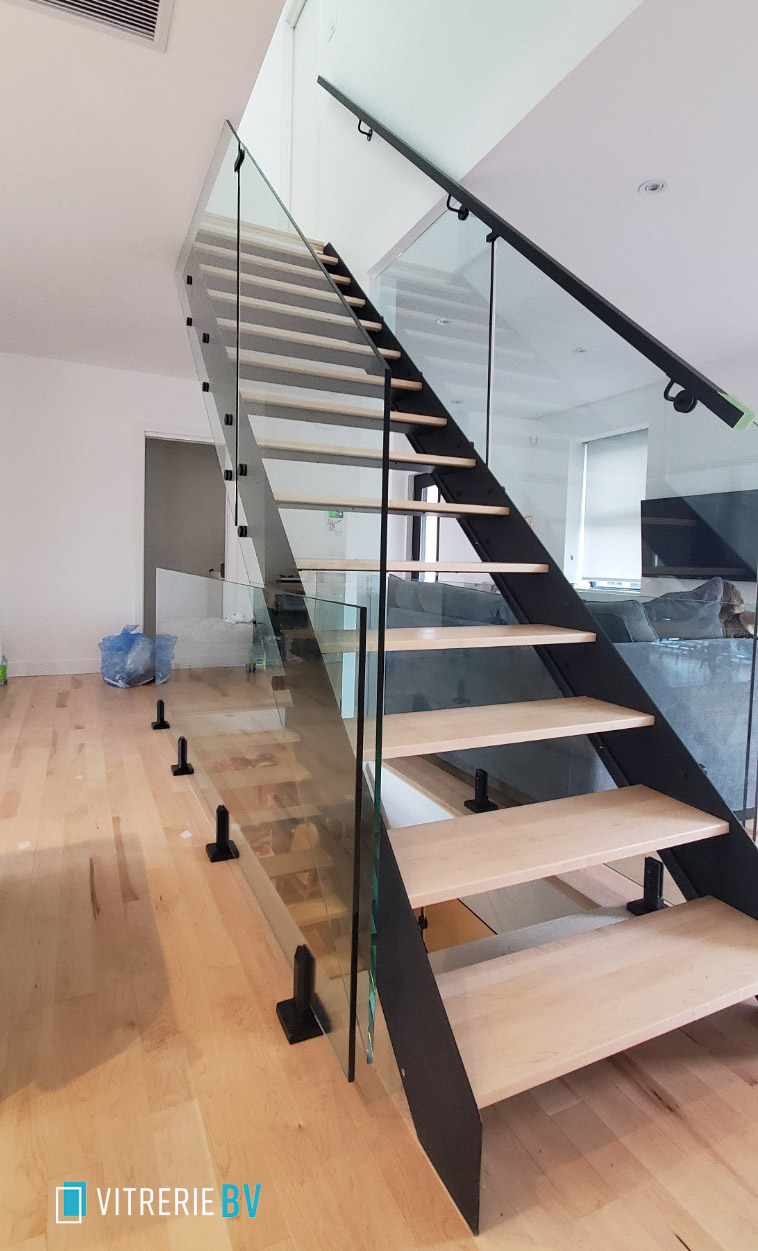
Spigot (SSSPIGOTS6B)
Round adjustable standoff 1-1/2'' (SSASF112112B)
Glass to glass clamp 180° (SSPFEB180B)
Square handrail 1-1/2'' (SSTSQ402304B)
Glass Railing Hardware Colour
The colour choices are vast, but the basic options are brushed stainless steel or matte black. It’s also possible to opt for a matte white finish, but this requires the application of a highly durable, high-temperature baked paint, which can mean extra installation time.
Again, custom colours are available to match your project. Just ask!
Type of Glass for Glass Railings
Glass railings and guardrails are typically installed with 10 mm or 12 mm tempered glass, depending on the type of anchorage used. Tempered glass is essential here. Cutting round corners with this type of glass is out of the question, and here’s why. Imagine this scenario: Fanie, your childhood friend, visits your house for the first time. You’re sitting comfortably in your living room, proudly admiring your staircase with its magnificent glass railings. Then your youngest, Nathan (aka Indiana Jones), excited about Fanie’s arrival, runs down the stairs to join her. Except, disaster! His sock, dragging on the stairs, slips under his feet. And then, hop! He misses the last two steps and crashes into the last glass wall. Luckily, it was tempered glass! Otherwise we can’t imagine the damage… But all’s well that ends well, and Nathan stands up, a little shaken, but without a scratch! A great story to illustrate the importance of thick, tempered glass for glass railings!
To help you demystify the different types of glass, here’s a list of the options available for these thicknesses (see table).
Download your freE comparison guide
What Are the Advantages of Glass Railings over Wood Railings?
Glass railings offer several advantages over wood railings. We’re talking practical here, not design, because both wood and glass are excellent options, depending on the style you’re looking for.
On the practical side, here are the differences with wood: First, their exceptional durability is a major asset. Designed to last much longer than wooden railings, they don’t deteriorate over time and don’t require constant maintenance. Unlike wood, which can rot, crack or require regular touch-ups, glass remains flawless, providing homeowners with a hassle-free, less expensive solution in the long run.
Another important advantage is the absence of common wood-related problems such as corrosion or rot, especially in damp outdoor environments. Glass is durable and does not require frequent replacement, making it an ideal option for many applications.
And of course, the design! A beautiful glass railing combined with a wooden handrail provides a modern, elegant, and unique look. This mix of materials creates an aesthetic contrast that blends perfectly into contemporary spaces while adding a distinctive, sophisticated touch.
Glass Railing and Creations
Examples of Glass Railing Installations
We don’t want to leave you high and dry! So here are some of the success stories of happy homeowners who have already taken the plunge!
